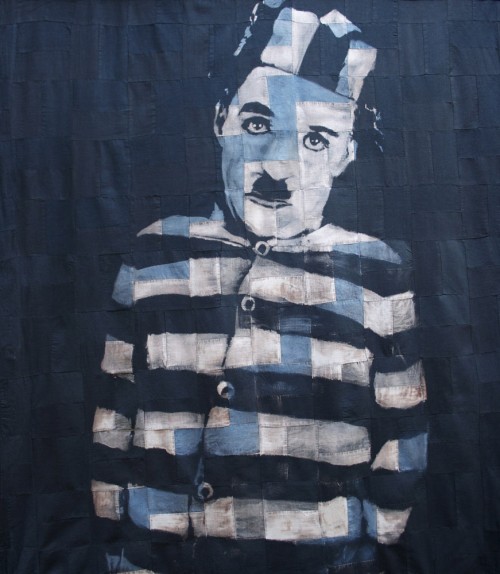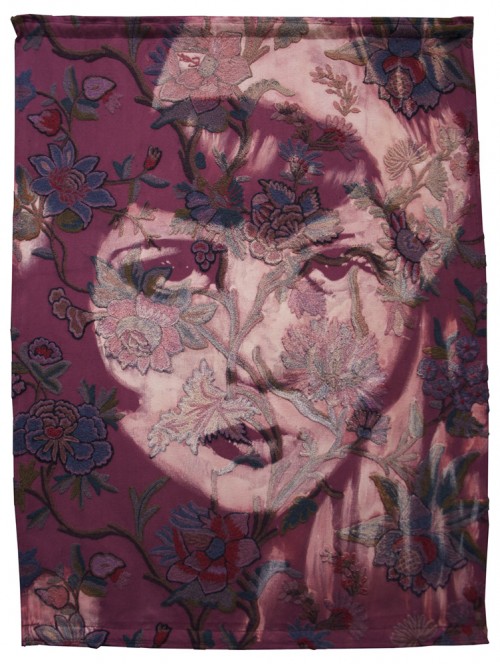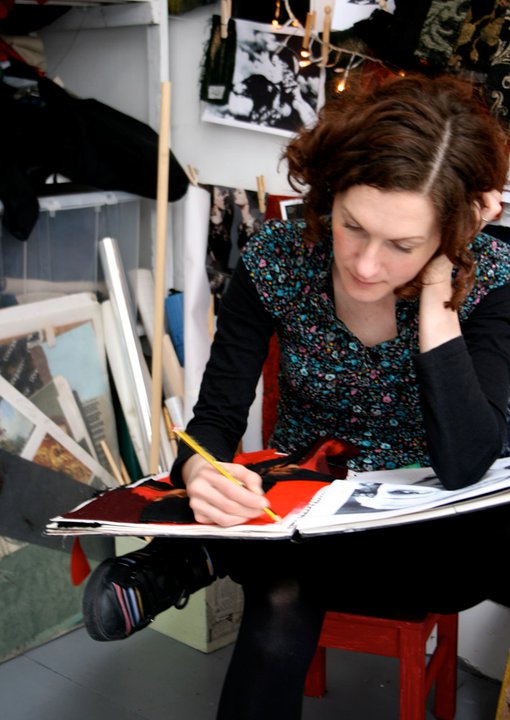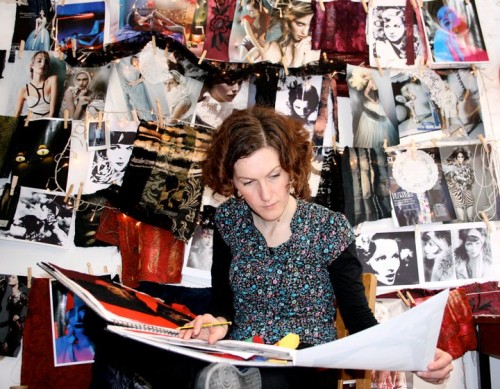BEAUTIFUL AND DAMNED: POST-URBAN POP ART
Pam Glew’s forthcoming show features icons from the Roaring 20s, from silent movies to the golden age of cinema. The next generation post-urban pop artist uses her signature style of dyeing and bleaching vintage materials to create poignant portraits of the beautiful and the damned.
‘Beautiful and Damned’, the shows title, is of course taken from F. Scott Fitzgerald’s 1922 novel, which explores the listless lives of moneyed society during the Jazz Age. This captivating era, drenched in glamour yet tinged with tragedy is the decadent setting for this extraordinary series of work. The exquisitely beautiful movie starlets, society icons and characters on display capture the spirit of the age all who are caught in the unforgiving glare of the limelight and some sadly burn out before their time. As Pam states, “the tragedy amongst the beauty is what has inspired this show, the sharp contrast between a blessed life and one that ends in scandal, hedonism or destitution”.
For this latest series, the artist uses found materials from the same period. This is the first time she has incorporated antiques into her work. Each piece is deconstructed, dyed, and repeatedly bleached until a portrait emerges from the cloth. Rather than add pigment, Glew takes away the pigments in layers, creating ghostly figures, which appear almost woven into the cloth. This technique, mastered by the artist, can also be seen in the ‘Flag’ series and ‘Circus’ series, these prolific luminaries’ faded portraits are not only responsive to the vulnerability of the characters but are also loaded with connotations of the fragility of all human life and the transcendent nature of all our lives. However, in this new body of work Glew explores colour and pattern as a contemporary re-invention of found materials. The vintage materials and antique techniques used, such as crewelwork, further highlight and bring to the surface the precious and tenuous lives of the characters featured.
Household names of the time feature in this ever so evocative exhibition, such as world famous vaudeville performer Josephine Baker, sultry screen goddess Marlene Dietrich and the pioneering aviators of the time Amelia Earhart the first female pilot to fly solo over the Atlantic, who went missing attempting to fly around the world and Charles ’Lucky Lindy’ Lindberg, whose child was notoriously kidnapped and murdered in the ‘Crime of the century’. These highly iconic figures, each with their own personal distressing life stories, represent the true spirit of the age.
Glew acknowledges the influence of some of the great Pop artists like Johns and Warhol while we also see a nod to women’s installation art and post-modern film theory allowing her to comment on contemporary society in a more poetic and subtle way than we usually see in the urban scene. Her gentle and feminine approach to a sensitive subject matter could be the reason why she has been picked up by the likes of the actress of the moment
– Gemma Arterton.






